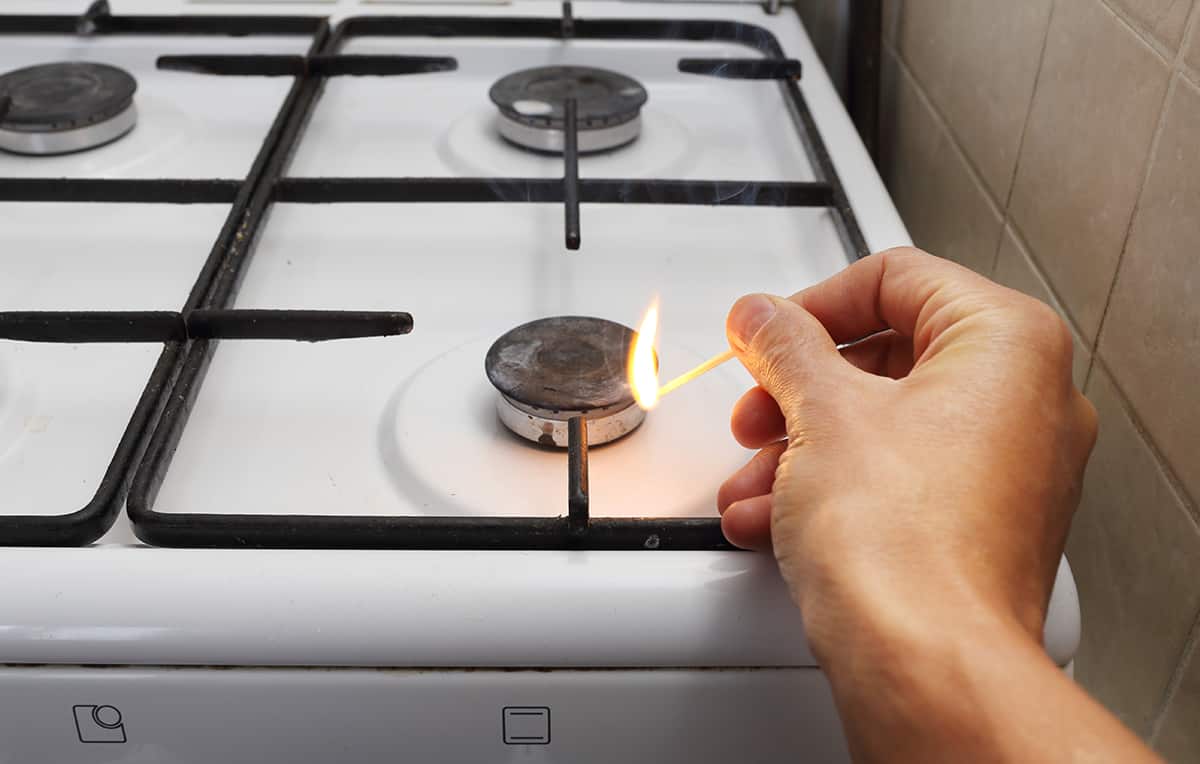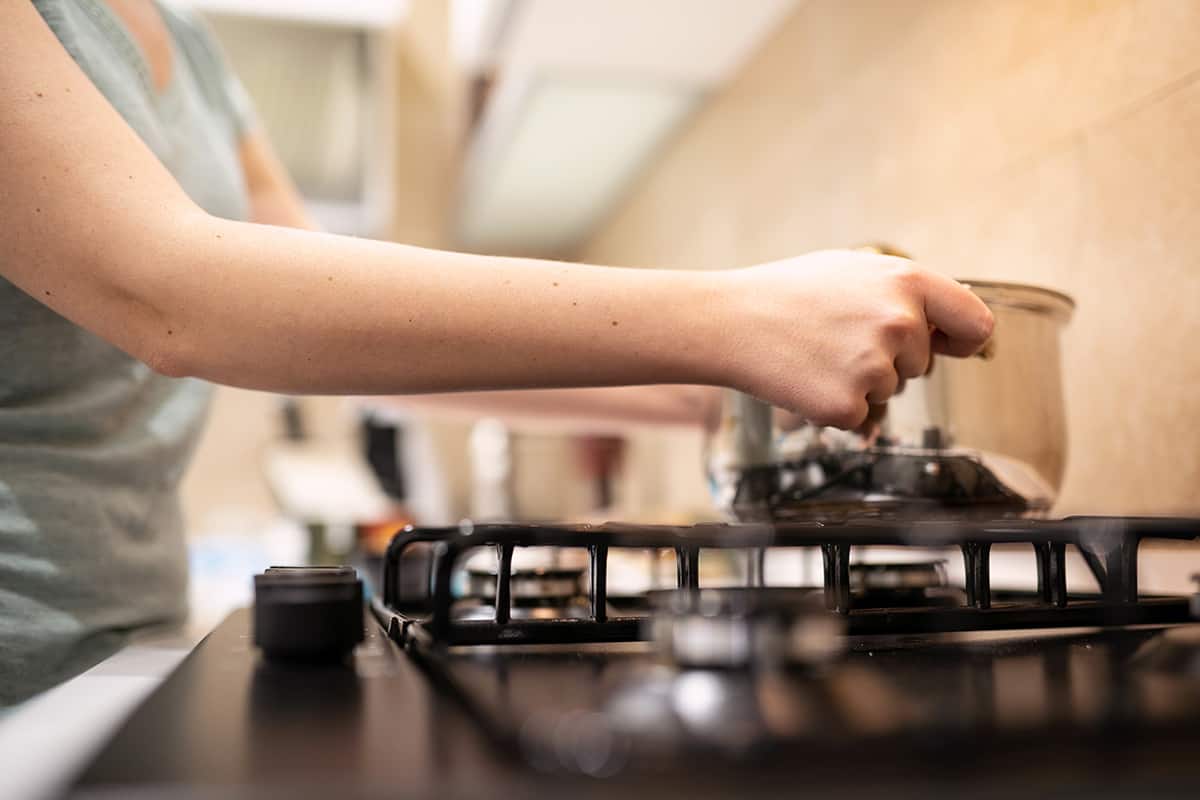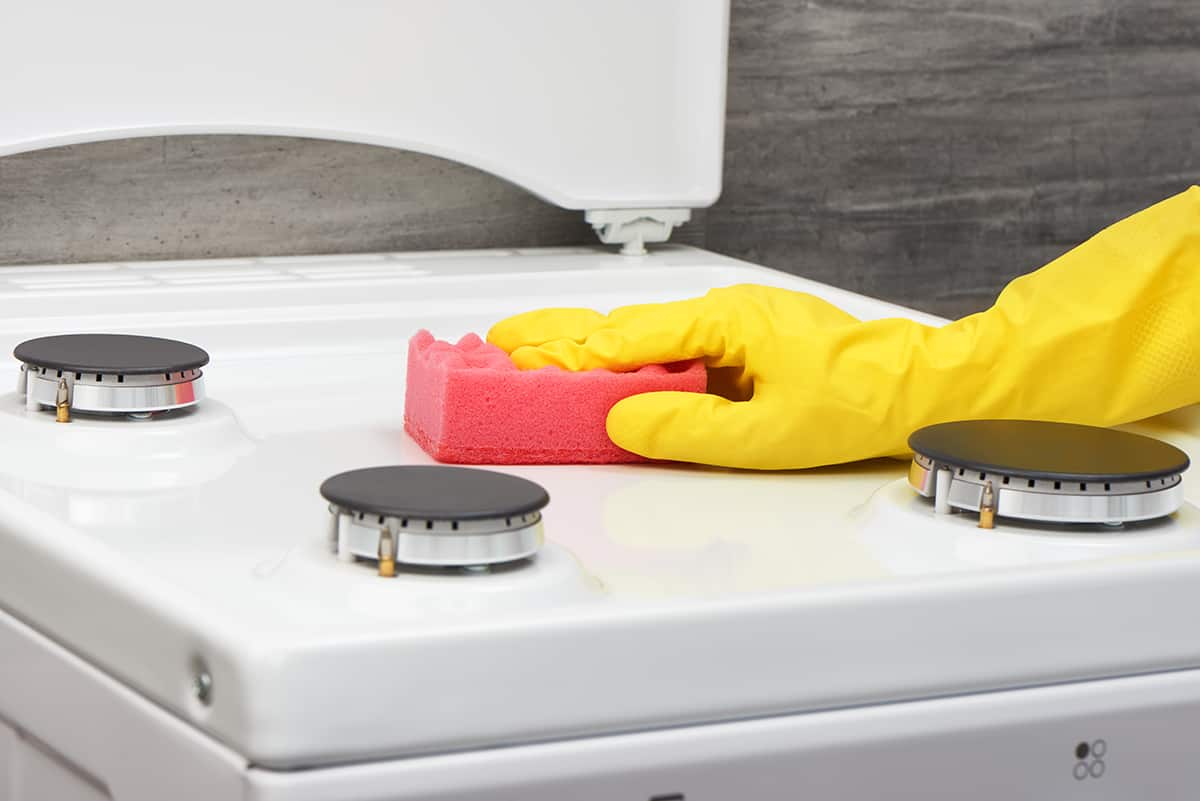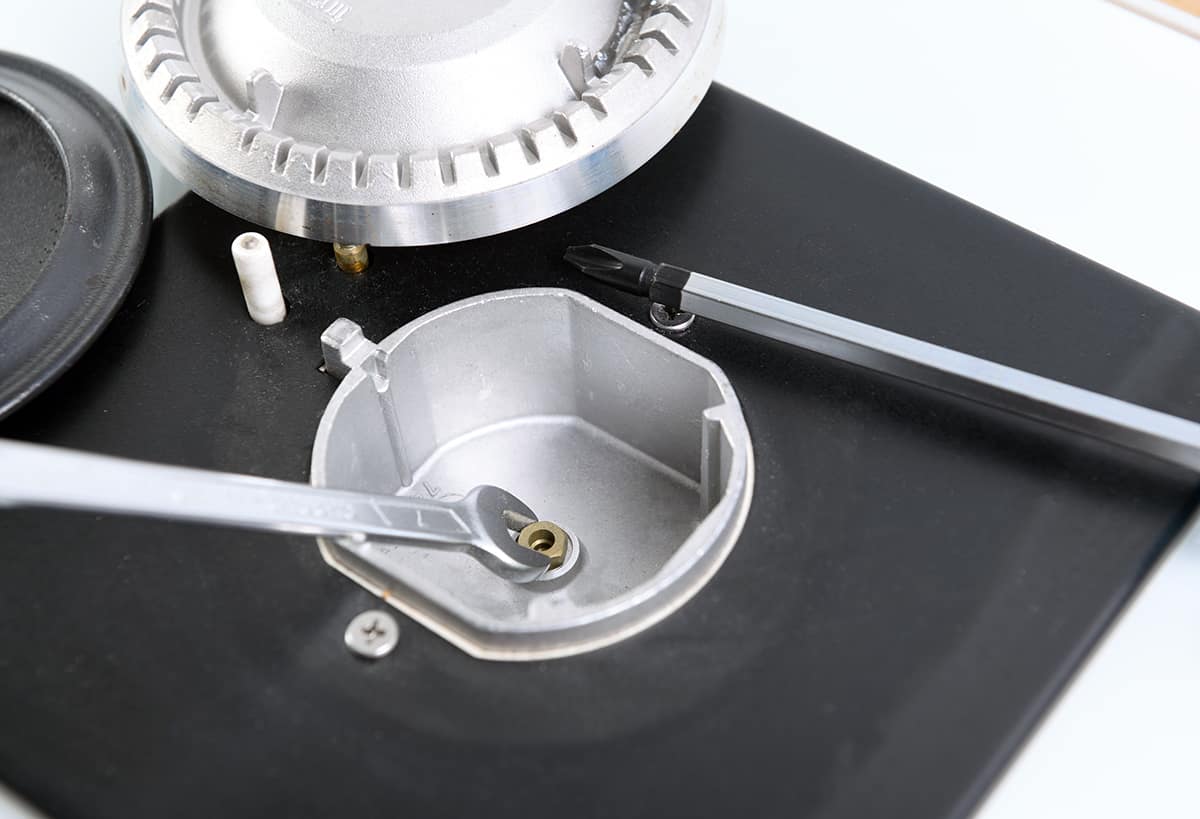Gas stoves are an essential part of our kitchens, helping us cook tasty meals every day. But like all machines, they can sometimes have problems. When a gas stove isn’t working correctly, it can be frustrating, and it can also be unsafe. It’s, therefore, important to know how to identify and solve common gas stove problems.
The most common gas stove problems are:
- Burners that won’t light
- Ignition issues
- Weak or uneven flames
- A clicking sound when the stove is off
- The stove’s oven not heating properly
This article will guide you through recognizing these common problems and how to troubleshoot them.
Common Gas Stove Problems
Gas stoves are often reliable, but sometimes they may act up. This section will help you identify the most common problems you might encounter with your gas stove.
1. Burners problems
The burners are the heart of your gas stove. If they’re not working correctly, you won’t be able to cook properly. Here are some issues that might occur:
- Burners won’t light: This is one of the most common problems. It could be due to a clogged burner, a faulty igniter, or problems with the gas supply.
- Low heat: If the flame is uneven or weak, it might be because the burner is dirty or there’s an issue with the gas pressure.
- Burner keeps going out: If your burner keeps going out, it might be due to a breeze in the kitchen or a problem with the gas line.
2. Ignition issues

The ignition system sparks the gas coming out of the burner to light it. If it’s not working, the burners won’t light. Here are some common ignition problems:
- Stove keeps clicking: This often happens when the igniter is dirty or wet. If it continues after you’ve cleaned and dried it, the igniter might need to be replaced.
- Burner won’t spark: If your burner isn’t sparking, the problem might be with the spark module or the spark ignition switch.
3. Weak or uneven flames
Uneven heating can make cooking difficult. It could be due to:
- Uneven burner caps: If the burner caps aren’t placed correctly, the flame might not be even.
- Blocked burner ports: Burner ports can get blocked with food particles or grease, causing uneven flames.
4. A clicking sound when the stove is off

If you’re noticing strange noises or smells from your stove, it might indicate a serious problem. A hissing noise could mean a gas leak, while a strange smell could indicate a blockage or a burned-out element.
5. The stove’s oven not heating properly
If your oven isn’t heating up properly, it might be due to a malfunctioning thermostat, a broken heating element, or issues with the gas supply.
Troubleshooting Common Gas Stove Problems
Now that you’re familiar with common gas stove problems let’s learn how to fix them. Always remember, if you feel uncomfortable doing any of these steps, it’s best to call a professional.
Fixing a Gas Stove That Won’t Light
If your burner won’t light, follow these steps:
- Check the gas supply: Ensure the gas supply is turned on and flowing properly. If it’s not, you’ll need to fix that first.
- Clean the burner: Sometimes, food particles can block the gas ports. Use a toothbrush to clean around the burner and a pin to clean the ports.
- Inspect the igniter: If the igniter is faulty, it might need to be replaced.
How to Handle Ignition Issues
Here’s how you can troubleshoot ignition issues:
- Clean the igniter: The igniter might not work if it’s dirty or wet. Clean it carefully and make sure it’s dry.
- Check the spark module and ignition switch: If the burner still won’t spark, you might need to replace the spark module or the ignition switch. This can be a bit complex, so you might want to call a professional.
Dealing with a Gas Stove with Weak or Uneven Flames
Here’s how to fix weak or uneven flames:
- Clean the burner: Food particles can block the gas ports and cause weak flames. Use a toothbrush to clean around the burner and a pin to clean the ports.
- Check the burner caps: Make sure the burner caps are placed correctly. If they’re not, it can cause uneven flames.
- Inspect the gas pressure: If the flames are still weak, there might be a problem with the gas pressure. You’ll need a professional to fix this.
Addressing a Clicking Stove When It’s Off
If your stove keeps clicking when it’s off, here’s what you can do:
- Dry the igniter: If the igniter gets wet, it can keep clicking. Dry it thoroughly and see if that fixes the problem.
- Replace the igniter: If drying the igniter doesn’t work, it might need to be replaced.
Resolving Issues with a Gas Stove’s Oven
If your oven isn’t heating up properly, follow these steps:
- Check the gas supply: Just like with the burners, make sure the gas supply to the oven is turned on and flowing properly.
- Inspect the heating element: If the heating element is broken, it will need to be replaced.
- Check the thermostat: The thermostat regulates the oven’s temperature. If it’s malfunctioning, your oven might not heat up properly. You might need a professional to replace it.
How to Avoid Common Gas Stove Problems

Preventing problems is always better than fixing them. Here’s how you can avoid common gas stove issues:
1. Maintain a Clean Stove
Keeping your stove clean can prevent many problems:
- Regular cleaning: Wipe down your stove after each use with a commercial or homemade solution. This will prevent food particles from building up and blocking the burners or igniter.
- Deep cleaning: Every few months, take apart the burners and clean them thoroughly. Use a toothbrush or pin to clean the gas ports.
- Dry the stove: Always make sure your stove is dry after cleaning. Wet igniters can cause clicking or prevent the burners from lighting.
2. Check the Gas Supply Regularly
Ensure the gas supply is always in good condition:
- Check the connection: Make sure the gas line is properly connected and not leaking.
- Monitor the gas pressure: If the flame is consistently weak, it might be due to low gas pressure. You might need a professional to check this.
3. Ensure Proper Installation and Placement of Parts
Installing and placing parts correctly can prevent many issues:
- Install correctly: Make sure your stove is installed correctly. An incorrectly installed stove can cause many problems, including gas leaks.
- Place burner caps correctly: Incorrectly placed burner caps can cause uneven flames. Make sure they’re always in the right place.
4. Regularly Inspect Your Stove
Regular inspections can help catch problems early:
- Check the burners: Look at the burners regularly to ensure they’re not blocked or damaged.
- Inspect the igniter: Check the igniter for any signs of damage. If it’s clicking constantly or not sparking at all, it might need to be replaced.
- Examine the oven: If your oven isn’t heating up properly, check the heating element and the thermostat.
FAQs
1. Why is my gas stove clicking but not igniting?
Your gas stove might be clicking but not igniting because of a problem with the igniter. This could be because it’s dirty, wet, or it could be broken. Try cleaning and drying the igniter first. If that doesn’t work, you might need to replace it.
2. How can I clean the burners of my gas stove?
To clean your gas stove’s burners, first, make sure the stove is off and completely cool. Remove the burner caps and grates. Use a soft cloth or sponge with mild soap and warm water to wipe down the surface. For the burner ports, you can use a toothpick or a small brush to remove any food particles. Once you’re done, dry everything thoroughly before putting it back together.
3. What do I do if I smell gas from my stove?
If you smell gas from your stove, it’s important to act quickly because it could be a gas leak, which is dangerous. Don’t light any matches or turn on any lights, as these can cause a spark. Open your windows to let fresh air in. If the smell is strong, leave the house immediately and call your gas company’s emergency number.
4. How long does a gas stove last?
A gas stove can last anywhere from 10 to 20 years, depending on how well it’s maintained. Regular cleaning and prompt repairs can help extend the lifespan of your gas stove. However, if your stove is older than 15 years and you’re having a lot of problems with it, it might be time to think about getting a new one.
5. When should I replace my gas stove?
You should consider replacing your gas stove if it’s more than 15 years old, if it needs frequent repairs, or if the cost of a repair is more than half the cost of a new stove. Other signs that it might be time to replace your stove include uneven heating, burners that won’t light, or if your energy bills are suddenly higher.






